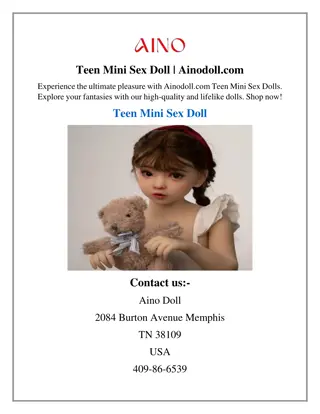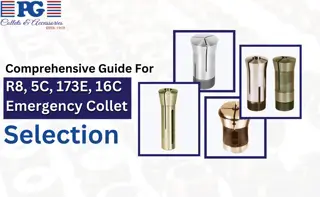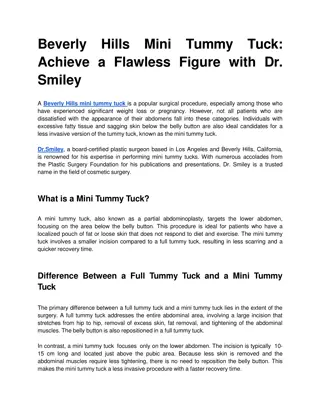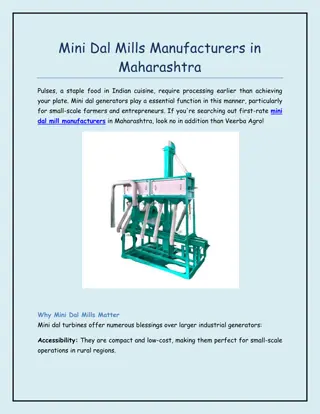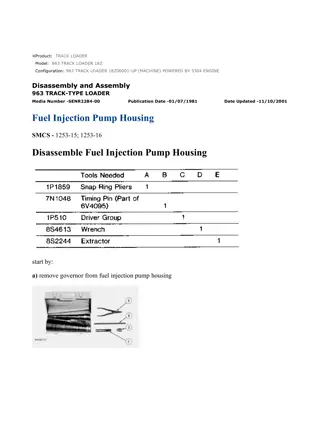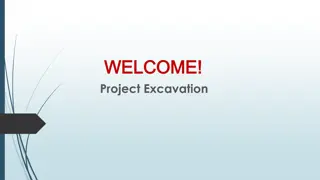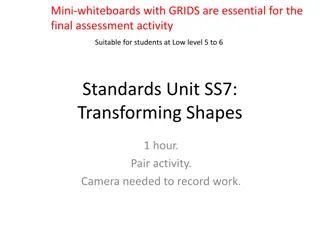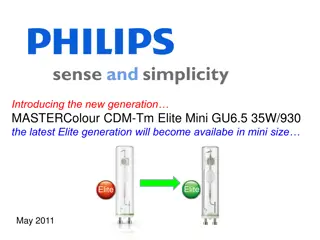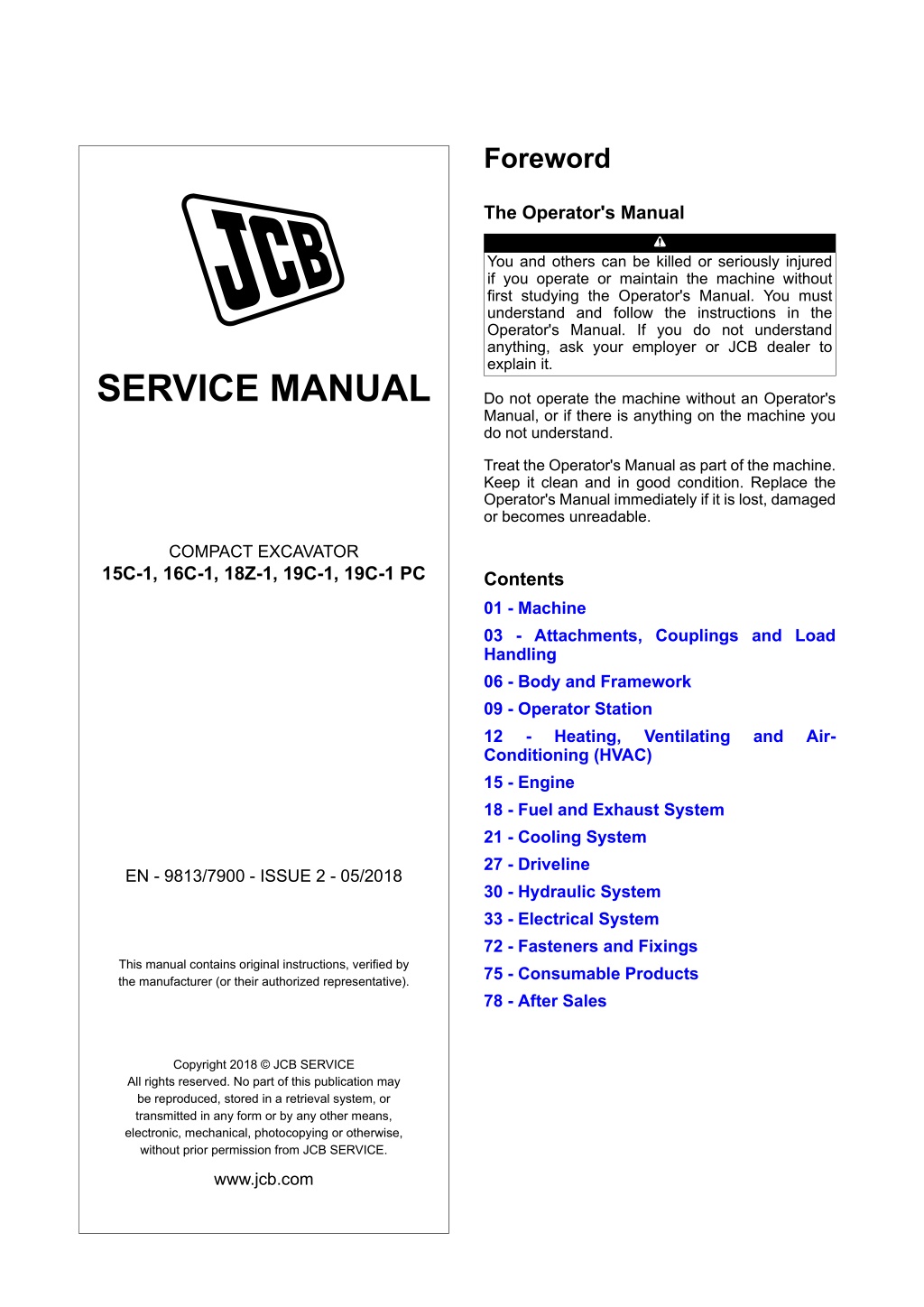
JCB 15C-1, 16C-1, 18Z-1, 19C-1, 19C-1 PC Mini Excavator Service Repair Manual Instant Download
Please open the website below to get the complete manualnn//
Download Presentation

Please find below an Image/Link to download the presentation.
The content on the website is provided AS IS for your information and personal use only. It may not be sold, licensed, or shared on other websites without obtaining consent from the author. Download presentation by click this link. If you encounter any issues during the download, it is possible that the publisher has removed the file from their server.
E N D
Presentation Transcript
Foreword The Operator's Manual You and others can be killed or seriously injured if you operate or maintain the machine without first studying the Operator's Manual. You must understand and follow the instructions in the Operator's Manual. If you do not understand anything, ask your employer or JCB dealer to explain it. SERVICE MANUAL Do not operate the machine without an Operator's Manual, or if there is anything on the machine you do not understand. Treat the Operator's Manual as part of the machine. Keep it clean and in good condition. Replace the Operator's Manual immediately if it is lost, damaged or becomes unreadable. COMPACT EXCAVATOR 15C-1, 16C-1, 18Z-1, 19C-1, 19C-1 PC Contents 01 - Machine 03 - Attachments, Couplings and Load Handling 06 - Body and Framework 09 - Operator Station 12 - Heating, Ventilating Conditioning (HVAC) 15 - Engine 18 - Fuel and Exhaust System 21 - Cooling System 27 - Driveline 30 - Hydraulic System 33 - Electrical System 72 - Fasteners and Fixings 75 - Consumable Products 78 - After Sales and Air- EN - 9813/7900 - ISSUE 2 - 05/2018 This manual contains original instructions, verified by the manufacturer (or their authorized representative). Copyright 2018 JCB SERVICE All rights reserved. No part of this publication may be reproduced, stored in a retrieval system, or transmitted in any form or by any other means, electronic, mechanical, photocopying or otherwise, without prior permission from JCB SERVICE. www.jcb.com
15 - Engine 15 - Camshaft 00 - General 00 - General Introduction Introduction .................................................... 15-51 Technical Data ............................................... 15-52 Component Identification ............................... 15-53 Operation ....................................................... 15-54 Check (Condition) .......................................... 15-55 Remove and Install ....................................... 15-56 Disassemble and Assemble .......................... 15-58 The relationship between the rotation of the camshaft and the rotation of the crankshaft is of critical importance. Since the valves control the flow of the air/fuel mixture intake and exhaust gases, they must be opened and closed at the appropriate time during the stroke of the piston. For this reason, the camshaft is connected to the crankshaft through a gear mechanism. When the engine runs the crankshaft drives the camshaft through the gears. The camshaft opens and closes the inlet and exhaust valves through the push rods in time with the four stroke cycle. 15 - 51 9813/7900-2 15 - 51
15 - Engine 15 - Camshaft 00 - General Technical Data Figure 155. Table 48. D Description Data Standard 34.453 34.507 mm Service limit 33.7 mm Height of the camshaft lobe for the inlet and exhaust valves Height of the camshaft lobe for the fuel in- jection pump Height of the camshaft lobe for the fuel priming pump E 41.94 42.06 mm 41.8 mm 31.9 32 mm 30 mm F D Actual camshaft lobe lift E Height of the camshaft lobe F Base circle Figure 153. A 3. Subtract the base circle diameter (1) from the height of the camshaft lobe (2). The difference is the actual camshaft lobe lift. Table 49. Torque Values C B Item G Description Setscrew Nm 11 A Camshaft lobe for the inlet and exhaust valves B Camshaft lobe for the fuel injection pump C Camshaft lobe for the fuel priming pump Figure 154. G J H G Setscrew H Retainer plate J Camshaft gear To determine the lobe lift use the following procedure: 1. Measure the height of the camshaft lobe. 2. Measure the base circle. 15 - 52 9813/7900-2 15 - 52
https://www.ebooklibonline.com Hello dear friend! Thank you very much for reading. Enter the link into your browser. The full manual is available for immediate download. https://www.ebooklibonline.com
15 - Engine 15 - Camshaft 00 - General Component Identification Figure 156. B A C D E A Camshaft C Bearing E Gear B Woodruff key D Spacer 15 - 53 9813/7900-2 15 - 53
15 - Engine 15 - Camshaft 00 - General Operation As the crankshaft rotates the camshaft also rotates, driven by a gear on the crankshaft. The inlet and exhaust valves are opened by lobes on the camshaft in time with the cycle. during the cycle it follows that the camshaft is driven at half crankshaft (engine) speed. Lubrication The diagrams show the position of the camshaft at each part of the four stroke cycle, refer to Engine- General, Operation. Refer to: PIL 15-00-00. Oil is fed from the main gallery via a drilling to the camshaft bearing. A groove around the diameter of the bearing and connecting the cross drilling ensures that oil is always fed to the centre drilling. Oil is then transferred to the remaining camshaft bearings by further cross drillings in the shaft. The cam lobes and tappets are 'splash' lubricated. It can be seen that for a complete cycle the camshaft revolves once. Since the crankshaft revolves twice Figure 157. 1 Main gallery 3 Groove 2 Camshaft bearing 4 Centre drilling 15 - 54 9813/7900-2 15 - 54
15 - Engine 15 - Camshaft 00 - General Check (Condition) 1. Inspect the camshaft gear teeth for signs of damage or excessive wear. 2. Inspect the cam lobes, the camshaft journals, and the cam bearing surfaces inside the crankcase for signs of excessive wear, or scoring. Make sure that the dimensions are within the service limits. 3. Inspect the bearing surfaces of the tappets for signs of excessive wear or damage. Check that the dimensions are within service limits. 4. Inspect the tappet bores inside the crankcase for signs of excessive wear or damage. Check that the dimensions are within service limits. 5. If any of the camshaft journals or lobes are worn or damaged then the relative oil feed galleries in the crankcase and camshaft may be blocked. Make sure all oil ways are clear and free from debris. Refer to: PIL 15-03-00. 15 - 55 9813/7900-2 15 - 55
15 - Engine 15 - Camshaft 00 - General Remove and Install 6. Remove the bolt 1 and then bolt 2. Remove 7. Remove the camshaft retainer. 1. Remove the valve tappet. Refer to: PIL 15-42-21. 8. Rotate the crankshaft until the timing marks are aligned on the following gears: 2. Remove the timing gear front case. Refer to: PIL 15-51-21. 8.1. Crankshaft gear 8.2. Camshaft gear 8.3. Idler gear 3. If installed, remove the mechanical fuel transfer pump. Refer to: PIL 18-21-00. 9. Carefully remove the camshaft assembly from the crankcase. 4. Remove the slider from the camshaft gear. 10. Make sure that the lobes of the camshaft and the camshaft bearings are not damaged. 5. Rotate the camshaft gear to align the access hole in the camshaft gear with the fastener. Figure 158. A B A C C D B A E E D G F A Bolt 1 C Slider E Camshaft retainer G Crankshaft gear B Bolt 2 D Camshaft gear F Idler gear 15 - 56 9813/7900-2 15 - 56
15 - Engine 15 - Camshaft 00 - General Figure 159. H H Camshaft assembly Install 1. The installation procedure is the opposite of the removal procedure. Additionally do the following steps. 2. Before installation, lubricate the bearings of the camshaft with clean engine oil. 3. Tighten the bolts to the correct torque value. Table 50. Torque Values Item A B Description Bolt 1 Bolt 2 Nm 10 10 15 - 57 9813/7900-2 15 - 57
15 - Engine 15 - Camshaft 00 - General Disassemble and Assemble 4. Remove the spacer and the woodruff key from the camshaft. Disassemble 5. Remove the bearing from the camshaft with the combination puller. 1. Remove the camshaft assembly. Refer to: PIL 15-15-00. 6. Make a note of the orientation of the bearing to help installation. 2. Remove the gear with a combination puller. 3. Keep the gear in the correct position on a suitable support to prevent damage to the governor flyweights. Figure 160. B A C D E A Camshaft C Bearing E Gear B Woodruff key D Spacer 15 - 58 9813/7900-2 15 - 58
15 - Engine 15 - Camshaft 00 - General Assemble 1. Make sure that all of the components of the camshaft assembly are clean and free from damage. 2. Lubricate the nose of the camshaft with clean engine oil. 3. Install the bearing to the camshaft with a suitable press. 3.1. Make sure that you install the bearing in the correct orientation. 3.2. Make sure that you press the camshaft bearing squarely onto the camshaft or damage to the bearing may occur. 3.3. Do not press on the outer race of the bearing. 4. Install the spacer and the woodruff key to the camshaft. 5. Align the gear with the woodruff key. 6. Install the gear to the nose of the camshaft with a suitable press. 7. Install the camshaft assembly. Refer to: PIL 15-15-00. 15 - 59 9813/7900-2 15 - 59
15 - Engine 18 - Engine Belt 03 - Drive Belt Adjust CAUTION Make sure the engine cannot be started. Disconnect the battery before doing this job, otherwise you could be injured. 5. Make sure that the drive belt deflects to specified distance. Distance: 7 mm 1. Make the machine safe. Refer to: PIL 01-03. 6. To adjust the drive belt tension, do as follows: 6.1. Loosen the alternator mounting bolts. 2. Make sure that the engine is safe to work on. If the engine has been running, let it cool before you start the service work. 6.2. Loosen the tension adjustment bolt and move the alternator. 7. Make sure of the following: 3. Open the engine cover. Refer to: PIL 06-06-06. 7.1. Excessive fan belt slack may result in damage to the engine timing cover. 4. Press the drive belt at the centre between the crankshaft pulley and the alternator pulley with a force of 5 kgf. 7.2. Any leverage required to position the alternator must be applied at the drive end only. If necessary, use only a wooden lever. 8. Tighten the bolts in the sequence given below: Figure 162. D E E F C A B A Drive belt C Alternator E Alternator mounting bolt B Crankshaft pulley D Fan F Tension adjustment bolt 8.1. Tension adjustment bolt. 8.2. Rear alternator mounting bolt. 8.3. Front alternator mounting bolt. 15 - 66 9813/7900-2 15 - 66
15 - Engine 18 - Engine Belt 03 - Drive Belt Remove and Install Refer to: PIL 33-03-00. Remove 4. Loosen the alternator mounting bolts and the tension adjustment bolt. 1. Make the machine safe. Refer to: PIL 01-03-27. 5. If necessary, remove the fan. 2. Get access to the drive belt. 6. Remove the drive belt. 3. Disconnect the battery. Figure 163. D E E F C A B A Drive belt C Alternator E Alternator mounting bolt B Crankshaft pulley D Fan F Tension adjustment bolt 15 - 67 9813/7900-2 15 - 67
15 - Engine 18 - Engine Belt 03 - Drive Belt Install 1. Installation is the opposite of the removal procedure. Additionally do the following steps. 2. Make sure of the following: 2.1. For applications that require multiple drive belts, replace the belts in matched sets. Replacing only one belt of a matched set will cause the new belt to carry more load because the older belt is stretched. The additional load on the new belt could cause the new belt to break. 3. When new belts are installed, check the belt tension again after 20 hours of engine operation. 4. Tighten the bolts in the sequence given below: 4.1. Tension adjustment bolt 4.2. Rear alternator mounting bolt 4.3. Front alternator mounting bolt 15 - 68 9813/7900-2 15 - 68
15 - Engine 21 - Oil Filter 00 - General Health and Safety Component Identification Oil Oil is toxic. If you swallow any oil, do not induce vomiting, seek medical advice. Used engine oil contains harmful contaminants which can cause skin cancer. Do not handle used engine oil more than necessary. Always use barrier cream or wear gloves to prevent skin contact. Wash skin contaminated with oil thoroughly in warm soapy water. Do not use petrol, diesel fuel or paraffin to clean your skin. CAUTION! It is illegal to pollute drains, sewers or the ground. Clean up all spilt fluids and/or lubricants. Used fluids and/or lubricants, filters and contaminated materials must be disposed of in accordance with local regulations. Use authorised waste disposal sites. CAUTION! Oil will gush from the hole when the drain plug is removed. Keep to one side when you remove the plug. CAUTION! The oil filter canister will contain some oil which could spill out when you remove the canister. Figure 164. C A B A Oil cooler B Adaptor C Oil filter 15 - 72 9813/7900-2 15 - 72
15 - Engine 21 - Oil Filter 00 - General Check (Level) Remove and Install Notice: Do not exceed the maximum level of engine oil in the sump. If the maximum is exceeded, the excess must be drained to the correct level. An excess of engine oil could cause the engine speed to increase rapidly without control. Important: Use of an oil filter not recommended by JCB could result in severe engine damage to the engine bearings, crankshaft, etc., as a result of the larger waste particles from unfiltered oil entering the engine lubricating system. Use only JCB recommended oil filters. 1. Make the machine safe. Refer to: PIL 01-03-27. Remove 1. Drain the engine oil. Refer to: PIL 15-00-00. 2. Make sure that the engine is safe to work on. If the engine has been running, let it cool before you start the service work. 2. Remove the oil filter with a suitable tool. 3. Wait for the oil to drain back into the engine sump before you take a reading. If not, a false low reading may be recorded which can cause the engine to be overfilled. 3. Use a suitable container to recover any residual oil. 4. Inspect the oil filter as follows. The steps 4.1 to 4.5 can be carried out as a preventive maintenance. 4. Open the engine compartment cover. Refer to: PIL 06-06-06. 4.1. Cut the oil filter open with a suitable tool. 5. Remove and clean the dipstick. 4.2. Break apart the pleats and check the oil filter for metal debris. An excessive amount of metal debris in the oil filter may indicate early wear or a pending failure. 6. Replace the dipstick. 7. Remove the dipstick. 8. Check the oil level. The oil should be between the two marks on the dipstick. 4.3. Use a magnet to differentiate between the ferrous metals and the nonferrous metals that are found in the oil filter element. 9. If necessary, add more oil. Refer to: PIL 15-00-00. 4.4. The ferrous metals indicate wear on the steel and cast iron parts of the engine. 10. Close the engine compartment cover. Refer to: PIL 06-06-06. 4.5. Non-ferrous metals indicate wear on the aluminum parts, brass parts or bronze parts of the engine. These affected parts include the following items: Main bearings Connecting Rod bearings Turbocharger bearings Cylinder heads 15 - 73 9813/7900-2 15 - 73
15 - Engine 21 - Oil Filter 00 - General Figure 165. C A B A Oil cooler B Adaptor C Oil filter Install 1. Clean the sealing surface of the oil cooler. 2. Apply clean engine oil to the new oil filter seal. 3. Do not fill the oil filters with oil before installing them. This oil would not be filtered and could be contaminated. Contaminated oil can cause accelerated wear to engine components. 4. Install the oil filter. Tighten the oil filter by hand. Do not overtighten the oil filter. 15 - 74 9813/7900-2 15 - 74
15 - Engine 28 - Crankcase Breather 00 - General Component Identification Remove and Install WARNING Personal injury can result from being struck by parts propelled by a released spring force. Make sure to wear all necessary protective equipment. Follow the recommended procedure and use all recommended tools to release the spring force. Figure 168. A B C D Remove 1. Remove the bolts. 2. Carefully remove the cover assembly, spring and the diaphragm. E 3. Make a note of the orientation of the cover to help installation. F 4. Remove the spring and the diaphragm from the cover. G H J 5. If necessary, remove the breather gauze as follows: A Bolt B Cover C Spring D Diaphragm E Vent hole F Gauze G Rocker cover H Screws J Plate 5.1. Remove the rocker cover. Refer to: PIL 15-42-06. 5.2. Remove the screws and the plate. 5.3. Remove the gauze from the rocker cover. Figure 169. A B C D E F G H J A Bolt B Cover C Spring D Diaphragm E Vent hole F Gauze G Rocker cover H Screws J Plate 15 - 84 9813/7900-2 15 - 84
15 - Engine 28 - Crankcase Breather 00 - General Install 1. Inspect all the components. 1.1. Clean all the parts. 1.2. Replace the worn or damaged parts. 1.3. Make sure that the cavity for the breather in the rocker cover is clean. 1.4. Make sure that the vent holes are free from restriction. 2. If removed, install the gauze for the breather as follows: 2.1. Install the gauze to the rocker cover. 2.2. Position the plate on the rocker cover and install the screws. 2.3. Tighten the screws to the correct torque value. 2.4. Install the rocker cover. Refer to: PIL 15-42-06. 3. Install the diaphragm and the spring to the cover. 4. Position the cover assembly, spring and the diaphragm on the rocker cover. 5. Make sure that you install the cover in the correct orientation. 6. Install the bolts. 7. Tighten the bolts to the correct torque value. Table 52. Torque Values Item A Description Bolt Nm 3 15 - 85 9813/7900-2 15 - 85
15 - Engine 30 - Valve 00 - General Technical Data Description Data Standard 1.94 2.16 mm Service limit 2.5 mm Contact face exhaust valve Refer to Figure 174. Contact face in- let valve Refer to Figure 174. Table 53. Description Data Inlet valve 1 Exhaust valve 1 1.5 2 mm 2.5 mm Number of valves per cylin- der Valve lash Valve guide seal 0.2 mm Black garter spring with a la- bel "EX" 45 0.2 mm Silver garter spring Figure 170. A Valve seat an- gle Refer to Fig- ure 174. 45 C B D Table 54. F Description Data Standard 35 mm E Service limit 33.5 mm Valve spring free length Valve spring test force Valve spring length under test force Clearance be- tween the ex- haust valve and the valve guide Refer to Figure 171. Clearance be- tween the in- let valve and the valve guide Refer to Figure 171. Diameter of the exhaust valve stem Diameter of the inlet valve stem Thickness of the valve head Refer to Figure 172. Valve depth be- low the cylinder head face Refer to Figure 173. H 79 N 68.6 N G 30.4 mm - A Valve spring B Exhaust valve guide seal C Inlet valve guide seal D Valve spring recesses E Exhaust valve guide F Inlet valve guide G Exhaust valve stem H Inlet valve stem 0.05 0.075 mm 0.25 mm 0.03 0.06 mm 0.2 mm 6.94 6.955 mm 6.84 mm 6.955 6.97 mm 0.925 1.075 mm 6.89 mm 0.5 mm 0.65 0.95 mm 1.8 mm 15 - 88 9813/7900-2 15 - 88
15 - Engine 30 - Valve 00 - General Figure 171. Figure 174. L M J L Valve seat angle M Contact face J Valve - valve guide clearance Figure 172. N N Valve head thickness Figure 173. K K Valve depth 15 - 89 9813/7900-2 15 - 89
15 - Engine 30 - Valve 00 - General Component Identification Operation Figure 175. The inlet valve and the exhaust valve are opened and closed by the rotation and movement of the following components: B A Crankshaft Idler gear Camshaft Valve tappets Push-rods Rocker arms Valve springs D C F E H The camshaft drive gear is driven by the idler gear at half the speed of the crankshaft. The camshaft gear, the idler gear and the crankshaft gear are timed together. The camshaft lobes, two for each cylinder, (operating exhaust and inlet valves) actuate the valve tappets. J L When the camshaft rotates the cam lobes act on the tappets. The push rods act on the rockers which pivot on the camshaft. G K A Collets B Valve spring retainer C Valve spring D Valve seal E Valve guide F Cylinder head G Cylinder head gasket H Push-rod J Tappet K Exhaust valve L Inlet valve Each valve has a compression spring. The function of the spring is to close the valve and at the same time return the rocker arm and push rod to ensure that the tappets follow the camshaft lobes. The spring is located on the valve stem by a retainer and collets. The illustration shows a four cylinder engine - but the operation is the same for the three cylinder version. Figure 176. B A D C F E H J L G K A Collets B Valve spring retainer C Valve spring D Valve seal E Valve guide 15 - 90 9813/7900-2 15 - 90
15 - Engine 30 - Valve 00 - General Check (Condition) F Cylinder head G Cylinder head gasket H Push-rod J Tappet K Exhaust valve L Inlet valve Valve Lash Setting The valve lash setting given below is applicable only when the engine is cold. Table 55. Inlet valve Exhaust valve 0.2 0.05 mm 0.2 0.05 mm Valve Lash Inspection If the valve lash requires adjustment several times in a short period of time, excessive wear exists in a different part of the engine. You must repair the problem to prevent further damage to the engine. Not enough valve lash can cause rapid wear of the camshaft and the valve tappets. Not enough valve lash can indicate that the valve seats are worn. The valves become worn due to the following causes: Incorrect operation of the fuel injectors. Excessive dirt and oil are present in the inlet air filter. Incorrect fuel settings on the fuel injection pump. The load capacity of the engine is frequently exceeded. The excessive valve lash can cause broken valve stems, springs and the spring retainers. This excessive valve lash can be an indication of the following problems: Worn camshaft and valve tappets. Worn rocker arms. Bent push-rods. Broken socket on the upper end of a push-rod. Loose the adjustment screw for the valve lash. 1. If the camshaft and valve tappets show rapid wear, look for fuel in the lubrication oil or dirty lubrication oil as a possible cause. 2. The valve lash is measured between the top of the valve stem and the rocker arm lever. 3. Remove the rocker cover and perform the adjustment procedure to adjust the valve lash. Refer to: PIL 15-30-00. 4. Inspect the valves for the cracks and other damage. 5. Check the valve stems for wear. 6. Check that the valve springs are the correct length under the test force. 15 - 91 9813/7900-2 15 - 91
15 - Engine 30 - Valve 00 - General Refer to: PIL 15-30-00. Valve Depth Check 1. Use the DTI (Dial Test Indicator) with the DTI holder to check the depths of the inlet valves and the exhaust valves below the face of the cylinder head. 2. Use the cylinder head face to zero the DTI. 3. Position the DTI holder and the DTI and measure the valve depth. Figure 177. A B A DTI B DTI holder 4. Measure the depth of the inlet valve and the exhaust valve before the valve springs are removed. 5. Make sure that the valve depth is within the specified limits. Refer to: PIL 15-30-00. 5.1. If the valve depth below the cylinder head face exceeds the service limit, replace the valve and check the valve depth. 5.2. If the valve depth still exceeds the service limit, renew the cylinder head or if installed, renew the valve seat inserts. 15 - 92 9813/7900-2 15 - 92
15 - Engine 30 - Valve 00 - General Adjust 4.1. The "Single dot" on the crankshaft pulley is the reference point for the TDC (Top Dead Centre) position of No. 1 and No. 4 cylinders. Valve Lash Adjustment 1. Make the machine safe. Refer to: PIL 01-03-27. 4.2. The "Middle dot" on the crankshaft pulley is the TDC reference point for No. 2 and No. 3 cylinders. 2. Remove the timing gear front case. Refer to: PIL 15-51-21. 5. Check the valve lash of the inlet valve and the exhaust valve of the No. 1 cylinder. 3. Rotate the crankshaft in a clockwise direction (viewed from the front of the engine). 6. If necessary, make an adjustment as follows: 4. When the inlet valve of the No. 4 cylinder has started to open and the exhaust valve of the No. 4 cylinder has not completely closed, make sure that the "Top" mark on the timing case aligns with the "Single dot" on the crankshaft pulley. 6.1. Loosen the locknut from the adjustment screw. 6.2. Place the appropriate feeler gauge between the rocker arm and the valve. Figure 178. F E E Single dot on crankshaft pulley F Middle dot on crankshaft pulley 15 - 93 9813/7900-2 15 - 93
15 - Engine 30 - Valve 00 - General Figure 179. B C D A A Feeler gauge C Locknut B Adjusting screw D Rocker arm 6.3. Hold the locknut and turn the adjustment screw. 12. Check the valve lash of the inlet valve and the exhaust valve of the No. 4 cylinder. If necessary, do the step 6 6.4. Adjust the valve lash until the correct specification is achieved. 13. Rotate the crankshaft in a clockwise direction to the specified angle. Angle: 180 6.5. After each adjustment, hold the adjusting screw and tighten the locknut. 7. Rotate the crankshaft in a clockwise direction to the specified angle. Angle: 180 14. When the inlet valve of the No. 3 cylinder has started to open and the exhaust valve of the No. 3 cylinder has not completely closed, make sure that the "Top" mark on the timing case aligns with "Middle dot" on the crankshaft pulley. 8. When the inlet valve of the No. 2 cylinder has started to open and the exhaust valve of the No. 2 cylinder has not completely closed, make sure that the "Top" mark on the timing case aligns with "Middle dot" on the crankshaft pulley. 15. Check the valve lash of the inlet valve and the exhaust valve of the No. 2 cylinder. If necessary, do the step 6. 16. Install the timing gear front case. Refer to: PIL 15-51-21. 9. Check the valve lash of the inlet valve and the exhaust valve of the No. 3 cylinder. If necessary, do the step 6 10. Rotate the crankshaft in a clockwise direction to the specified angle. Angle: 180 11. When the inlet valve of the No. 1 cylinder has started to open and the exhaust valve of the No. 1 cylinder has not completely closed, make sure that the "Top" mark on the timing case aligns with "Single dot" on the crankshaft pulley. 15 - 94 9813/7900-2 15 - 94
Suggest: If the above button click is invalid. Please download this document first, and then click the above link to download the complete manual. Thank you so much for reading
15 - Engine 30 - Valve 00 - General Remove and Install WARNING Personal injury can result from being struck by parts propelled by a released spring force. Make sure to wear all necessary protective equipment. Follow the recommended procedure and use all recommended tools to release the spring force. WARNING The valve spring keepers can be thrown from the valve when the valve spring compressor is released. Make sure that the valve spring keepers are properly installed on the valve stem. To help prevent personal injury, keep away from the front of the valve spring keepers and valve springs during the installation of the valves. 5. Check the depth of the valves below the face of the cylinder head before you remove the valve springs. 6. Mark the heads of the valves to help installation. Do not stamp the heads of the valves, this can cause the valves to fracture. 7. Compress the valve spring with the valve spring compressor tool. 8. Make sure that you compress the valve spring squarely or damage to the valve stem may occur. 9. Remove the valve keepers. 10. Do not compress the valve spring so that the valve spring retainer touches the valve stem seal. Remove 1. Make the machine safe. Refer to: PIL 01-03-27. 11. Remove the valve spring compressor tool. 12. Remove the valve spring retainer. 2. Make sure that the engine is safe to work on. If the engine has been running, let it cool before you start the service work. 13. Remove the valve spring. 14. Remove the valve. 3. Remove the cylinder head. Refer to: PIL 15-06-00. 15. Remove the valve stem seal. 16. Do the step 7 to step 15 for the remaining valves. 4. Clean the bottom face of the cylinder head. Figure 180. A A B B C C G D F E A Valve keeper C Valve spring E Valve G Valve spring compressor tool B Spring retainer D Valve stem seal F Cylinder head 15 - 95 9813/7900-2 15 - 95
https://www.ebooklibonline.com Hello dear friend! Thank you very much for reading. Enter the link into your browser. The full manual is available for immediate download. https://www.ebooklibonline.com









